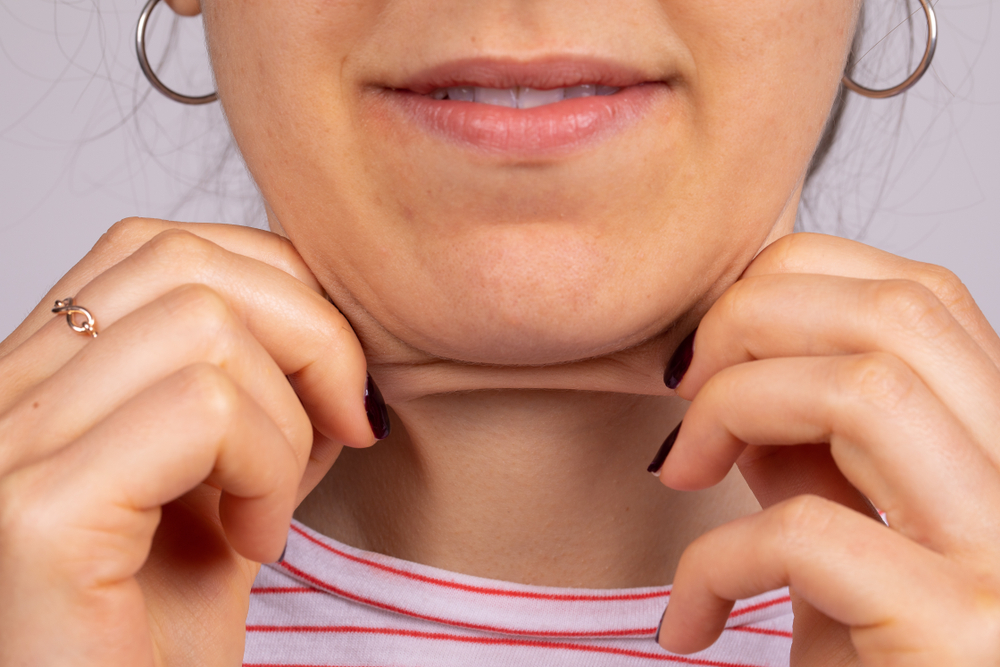It’s no secret that weight loss can transform not just the way you feel but also how you look. Yet, for some, the transformation comes with unexpected changes—particularly in the mirror. A new term has emerged: “Ozempic face.” What does it mean, and why are so many people talking about it?
Behind the growing popularity of this diabetes medication lies a complex story of benefits, side effects, and the delicate balance of health and aesthetics. The truth might surprise you, and it’s something anyone considering Ozempic should understand fully.
Let’s start with the basics: what exactly is Ozempic, and why has it become the talk of both the medical and cosmetic worlds?
What Is Ozempic and What Is It For?
Ozempic, known generically as semaglutide, is a prescription medication designed to help individuals with type 2 diabetes manage their blood sugar levels. It belongs to a class of drugs called glucagon-like peptide-1 (GLP-1) receptor agonists, which work by stimulating insulin production when blood glucose levels are elevated. Additionally, it slows down the digestive process, which can help individuals feel full for longer periods. Administered via a once-weekly injection, Ozempic has proven highly effective in its intended purpose—diabetes management.
Despite its growing popularity, it’s crucial to remember that Ozempic’s primary role is to assist with diabetes control. Its weight-loss effects are secondary, and using the medication solely for shedding pounds requires careful consideration and medical oversight. Unsupervised use can lead to side effects or complications, emphasizing the need for responsible administration under the guidance of a healthcare provider.
Ozempic remains a vital tool for individuals managing type 2 diabetes. However, as its off-label use grows, so does the importance of understanding the full scope of its effects, including the cosmetic and medical implications of rapid weight loss. This highlights the necessity for a balanced approach—leveraging its benefits while staying mindful of potential risks like the development of “Ozempic face.”

What Is Ozempic Face?
The term “Ozempic face” refers to noticeable facial changes that some individuals experience after significant weight loss associated with the use of Ozempic (semaglutide). These changes often include sagging skin, increased wrinkles, and a hollowed or gaunt appearance. Dr. Paul Jarrod Frank, a cosmetic dermatologist, reportedly coined this term after observing these specific facial alterations in patients undergoing rapid weight reduction with Ozempic.
Signs of Ozempic Face
Individuals experiencing Ozempic face may notice:
- Increased Wrinkles: The loss of underlying fat can make fine lines and wrinkles more prominent.
- Sagging Skin: A decrease in facial volume can lead to loose or drooping skin, particularly around the cheeks and jawline.
- Hollowed Appearance: The cheeks may appear sunken, giving the face a gaunt look.
- Lipodystrophy: This condition affects how the body accumulates and stores fat, potentially leading to uneven fat distribution in the face.
How Ozempic Causes Appearance Changes
Ozempic face arises from the interplay between rapid weight loss and the structural components of facial skin. Understanding this relationship requires a closer look at the roles of facial fat, collagen, and elastin, and how their reduction impacts skin appearance.
Facial fat serves as a natural filler, providing volume and contour to the face. This subcutaneous fat layer supports the skin, maintaining its tautness and youthful appearance. When significant weight loss occurs, especially rapidly, there’s a substantial reduction in this fat, leading to a loss of facial volume. This depletion can result in a gaunt or hollowed look, as the skin loses its underlying support.
Collagen and elastin are essential proteins that contribute to the skin’s firmness and elasticity. Rapid weight loss can disrupt the production and integrity of these proteins. The sudden decrease in facial fat doesn’t allow sufficient time for the skin to adjust, leading to diminished collagen and elastin levels. This reduction impairs the skin’s ability to retract and conform to the new facial contours, resulting in sagging and increased wrinkles.
Other Side Effects of Ozempic
While Ozempic (semaglutide) is effective in managing type 2 diabetes and promoting weight loss, it’s essential to be aware of its potential side effects, which can range from mild to severe.
Many individuals experience mild side effects when starting Ozempic, which often diminish as the body adjusts to the medication. These include gastrointestinal issues, such as nausea, vomiting, diarrhea, and constipation, as well as fatigue. There may also be redness, swelling, or itching around the injection site. These side effects are generally manageable and temporary. However, if they persist or worsen, it’s advisable to consult a healthcare provider.
Serious Side Effects
Though less common, Ozempic can lead to more severe side effects that require immediate medical attention:
- Pancreatitis: Inflammation of the pancreas, presenting as severe abdominal pain that may radiate to the back, accompanied by nausea and vomiting.
- Kidney Problems: Reports indicate potential kidney damage, especially in individuals with pre-existing kidney conditions.
- Gallbladder Disease: Including gallstones and cholecystitis, which may cause abdominal pain, fever, and jaundice.
- Thyroid Tumors: Animal studies have shown an increased risk of thyroid C-cell tumors with GLP-1 receptor agonists like Ozempic. While the relevance to humans is uncertain, it’s crucial to monitor for symptoms such as a lump in the neck, hoarseness, or difficulty swallowing.
- Hypoglycemia: Low blood sugar levels, particularly when combined with other diabetes medications.
- Allergic Reactions: Severe reactions may include rash, itching, swelling, severe dizziness, or trouble breathing.

Can You Prevent Ozempic Face?
Preventing or mitigating the facial side effects of rapid weight loss, but several strategies may help alleviate these concerns. One effective approach is consulting with a healthcare provider about adjusting the dosage or considering alternative medications. Such changes could potentially reduce the severity of side effects without compromising the therapeutic benefits.
Hydration plays a crucial role in maintaining skin elasticity and plumpness. I recommend drinking 1-2 liters of water daily to ensure that the skin remains hydrated and resilient. Alongside hydration, incorporating a protein-rich diet and foods that enhance collagen production—such as bone broth, berries, and leafy greens—can significantly support skin health. Collagen supplements may also be beneficial, providing the necessary building blocks to maintain skin firmness and prevent sagging.
Protection from the sun is also vital, as UV exposure can accelerate the degradation of collagen, leading to thinner, more fragile skin. Daily use of a broad-spectrum sunscreen can shield the skin from harmful rays, preserving its structural integrity.
Additionally, regular facial exercises can strengthen the muscles beneath the skin, improving blood flow and enhancing facial contours, which may counteract the gaunt appearance often associated with rapid weight loss or medication side effects.
Meanwhile, maintaining a healthy lifestyle through balanced diet and regular exercise contributes not only to overall well-being but also to skin health, offering a natural defense against the unwanted cosmetic effects of medications like Ozempic.

What Happens After Stopping Ozempic?
Discontinuing Ozempic can lead to several physiological changes, particularly concerning weight and metabolic health. Understanding these potential outcomes is crucial for individuals considering or advised to stop the medication.
Weight Regain
A significant concern upon stopping Ozempic is the potential for weight regain. A study published in Diabetes, Obesity and Metabolism observed that participants regained approximately two-thirds of the weight they had lost within a year after discontinuing semaglutide. This suggests that the weight loss achieved with Ozempic may not be sustained without continued treatment.
Return of Appetite and Cravings
Ozempic functions by mimicking the hormone GLP-1, which helps regulate appetite and food intake. After stopping it, individuals may experience a resurgence in appetite and food cravings, potentially leading to increased caloric intake and weight gain.
Blood Sugar Fluctuations
For those using Ozempic to manage type 2 diabetes, stopping the medication can result in elevated blood sugar levels. Without the drug’s glucose-lowering effects, individuals may need to adjust their diabetes management plan under medical supervision to maintain glycemic control.
Reappearance of Side Effects
Some side effects experienced during Ozempic use, such as gastrointestinal discomfort, may subside after discontinuation. However, the benefits related to weight loss and blood sugar regulation are also likely to diminish, underscoring the importance of a comprehensive management plan post-discontinuation.
My Personal RX on Healthier Weight Loss
Achieving and maintaining a healthy weight is a common goal for many, and while medications like Ozempic are often prescribed for weight management, there are numerous natural strategies and alternatives that can provide sustainable results. Here are my personalized tips for healthier weight loss and management:
- Hydrate Consistently: Staying hydrated helps maintain skin elasticity and overall health, especially during rapid weight loss. Aim for at least 2 liters of water a day. Your skin will thank you!
- Focus on Quality Nutrition: A diet rich in lean proteins, healthy fats, and whole grains provides the nutrients needed for collagen production and skin resilience. Boost your meals with superfoods like berries and leafy greens for added benefits.
- Incorporate MetaBurn: Consider natural weight management aids like my MetaBurn, which supports optimal weight and helps reduce cravings. Pair it with a balanced diet for sustainable progress without compromising your energy levels.
- Stick to Gradual Weight Loss: Rapid weight loss may be tempting, but a steady approach allows your skin and body to adjust. This minimizes risks like sagging skin or Ozempic face.
- Follow a Holistic Health Guide: Invest in resources like my free 50-page Protocol, a comprehensive guide to achieving your best health. It focuses on holistic strategies that complement medical treatments for long-term well-being.
- Protect Your Skin: Use sunscreen daily to prevent skin damage and incorporate a retinoid or hyaluronic acid product into your skincare routine to support elasticity and hydration.
- Stay Active: Exercise is crucial not only for weight loss but also for maintaining overall health. Aim for at least 150 minutes of moderate aerobic activity or 75 minutes of vigorous activity each week, along with muscle-strengthening exercises on two or more days a week.
- Sleep Well: Lack of sleep can interfere with your body’s hunger hormones and could lead to weight gain. Aim for 7-9 hours of quality sleep per night to support weight loss and overall health.
- Track Your Progress: Journaling your health journey, including your diet, exercise, and how you feel, can help you stay motivated and identify areas for improvement. Plus, it’s a great way to celebrate small wins.
- Be Kind to Yourself: Remember, your health journey is uniquely yours. Celebrate progress, no matter how small, and prioritize what makes you feel good from the inside out.

Sources:
- Akhtar, A. (2023, May 24). A cosmetic dermatologist says he’s seeing “Ozempic face,” or gaunt cheeks from taking the buzzy weight loss drug. Business Insider. https://www.businessinsider.com/what-is-ozempic-face-a-celebrity-plastic-surgeon-explains-2023-1
- Donnelly, B. (2024, November 26). Ozempic face: The cosmetic concerns of rapid weight loss. Northwell Health. https://www.northwell.edu/news/insights/ozempic-face
- Ozempic® Side Effects | Ozempic® (semaglutide) injection. (n.d.). https://www.ozempic.com/how-to-take/side-effects.html
- Sodhi, M., Rezaeianzadeh, R., Kezouh, A., & Etminan, M. (2023). Risk of gastrointestinal adverse events associated with Glucagon-Like peptide-1 receptor agonists for weight loss. JAMA, 330(18), 1795. https://doi.org/10.1001/jama.2023.19574
- Monami, M., Nreu, B., Scatena, A., Cresci, B., Andreozzi, F., Sesti, G., & Mannucci, E. (2017). Safety issues with glucagon‐like peptide‐1 receptor agonists (pancreatitis, pancreatic cancer and cholelithiasis): Data from randomized controlled trials. Diabetes Obesity and Metabolism, 19(9), 1233–1241. https://doi.org/10.1111/dom.12926
Wilding, J. P. H., Batterham, R. L., Davies, M., Van Gaal, L. F., Kandler, K., Konakli, K., Lingvay, I., McGowan, B. M., Oral, T. K., Rosenstock, J., Wadden, T. A., Wharton, S., Yokote, K., & Kushner, R. F. (2022). Weight regain and cardiometabolic effects after withdrawal of semaglutide: The STEP 1 trial extension. Diabetes Obesity and Metabolism, 24(8), 1553–1564. https://doi.org/10.1111/dom.14725











 Subscribe to Ask Dr. Nandi YouTube Channel
Subscribe to Ask Dr. Nandi YouTube Channel










